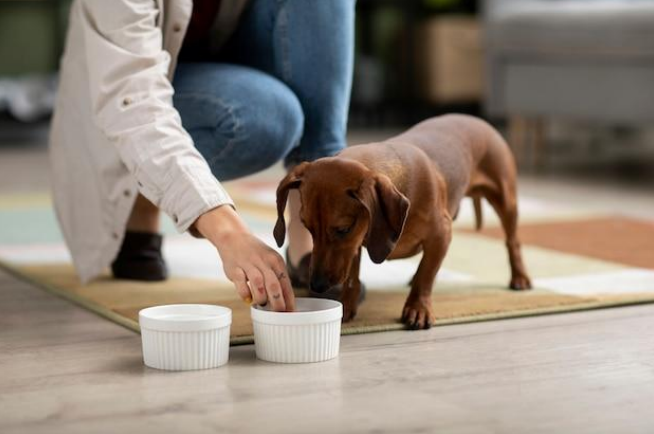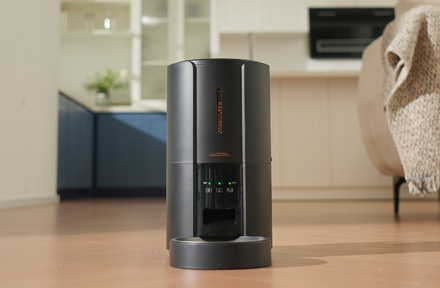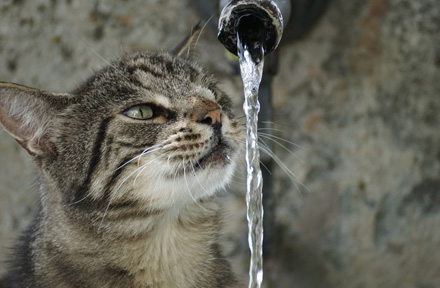May 13, 2025
Author:Sam Wonder

Have you ever watched your dog gobble up a bowl of kibble, only to turn around a few minutes later and see that same food spilling back out? It’s heart-wrenching when you spot your pet dog throwing up undigested food, and you’re left wondering what’s going on. You might ask yourself, “Is this normal? When should I worry?” In this guide, we’ll break down exactly why dogs sometimes spit up their meals before digestion even starts. You’ll learn how to tell real vomiting from just regurgitation, spot warning signs, and find easy fixes you can try at home.
Vomiting is an active process. Your dog’s stomach muscles tighten and push out its contents—partly digested food, bile, or other fluids. Before that big heave, you might see your pup drool, retch, or pace. This effort shows the gut is working to remove something it sees as harmful.
Regurgitation is a passive event. Undigested food leaks back up from the esophagus without the forceful stomach contractions you see in vomiting. Usually, regurgitated food looks untouched, often tube-shaped, and pops up very soon after eating.
Mixing these two up can delay the right fix. When you say dog throwing up undigested food, knowing whether it’s vomiting or regurgitation helps you and your vet choose the best treatment. Precise terms mean clearer advice and faster relief.
Some dogs inhale meals like there’s no tomorrow. All that air and food blitzing down the throat can lead to regurgitation. If your dog is a speed-eater, try a slow-feeder bowl or puzzle feeder to calm things down—just like tips to say goodbye to overeating in pets with smart feeding solutions. By forcing your dog to work for each bite, you cut down gulping and keep food moving smoothly into the stomach. For the best and timely dietary needs for your dog, we recommend you buy WOpet’s automatic pet feeder.
Dietary disagreements along with inferior food components tend to disrupt any digestive system. A large number of dogs manifest allergies to typical food proteins chicken and beef. Others can’t process certain grains or fillers. When you see your dog dog throwing up undigested food and trace amounts of bile, it could point to an intolerance.
Always change foods over 7–10 days, blending the new and old. For big-picture tips on quality ingredients, check out this overview of fresh vs. processed cat food—the same principles help dogs, too.
Dogs feel stress just like people. A thunderstorm, new home, or separation anxiety can crank up cortisol, which messes with digestion and leads to regurgitation. If your furry friend seems anxious around dinnertime, try adding the calm vibes of a pet camera feeder so they can watch you refill meals, even when you’re not home.
Issues like megaesophagus—a stretched, weak esophagus—stop food from reaching the stomach. Instead, meals just sit in the tube and come back up. Other times, a swallowed toy or bone piece blocks the path. Your dog ends up dog throwing up undigested food repeatedly. In cats, you’d aim to prevent blockages to maintain esophageal health; learn more by protecting your cat’s kidneys—the concept of guarding vital pathways is similar.
Inflammation of the stomach lining (gastritis) or slow stomach emptying (gastric hypomotility) can back up food until it spills out. Older dogs often face these issues. Supporting gut health with supplements like probiotics can help—see how to boost gut flora in pets by checking out smart pet care hacks combining auto-feeders and water fountains.
A stray sock, small rock, or chew toy swallowed wrong can block the digestive tract. When nothing moves past the snag, your dog ends up dog throwing up undigested food and water. Keep trash cans sealed and non-food items off the floor. Learn more about avoiding snack raids by exploring how to keep cats from eating each other’s food—same safe-space idea applies for dogs.
Tiny worms or gut bugs can wreck digestion. Roundworms, hookworms, and protozoa feast on your dog’s nutrients, leading to vomiting episodes. Bacterial or viral infections like parvovirus also cause severe vomiting before the food digests. Routine deworming and fecal checks offer strong protection—see an example feeding schedule for young pets in healthy kitten feeding schedule, which covers parasite control steps that fit dogs, too.

● Undigested food signals the problem lies higher in the tract.
● Partly digested bits mean the stomach got involved first.
● Watch for colors: yellow bile, red blood, green grass—each shade hints at what’s happening inside.
● Right after eating: points to regurgitation or speedy gulping.
● A few hours later: flags motility issues or deeper blockages.
Notice if your dog exhibits signs of fatigue because this indicates a problem that requires monitoring. Serious gut distress in dogs frequently triggers behavioral changes which include regular changes of movement and hiding and constant whining.
One upset stomach happens. But dog throwing up undigested food more than twice a week, or any bloody vomit, calls for action. Puppies need care fast—they dehydrate in hours, so don’t wait.
Your vet starts with your pet’s history: diet, eating speed, stress factors, and household pets. Physical exams look for a bloated belly or pain. Tests like bloodwork check organ function. X-rays or ultrasounds reveal blockages, masses, or esophageal issues.
Keep a log of each episode: time, what your dog ate, how they acted first. This journal arms your vet with clues. Snap a quick phone photo of the vomit if you can.
If you catch some vomit, seal it in a clean bag for lab analysis. Stool samples check for parasites. The more info you bring, the faster the vet can zero in on the root cause.
Swap regular bowls for a slow-feeder dish. These bowls force your pup to eat around obstacles, cutting gulping drastically. Or try a puzzle feeder, similar to ideas in the ultimate guide to automatic cat feeders. With each bite earned, digestion goes smoother.
When switching food, blend 70% old with 30% new, then shift gradually over 7–10 days. For upset tummies, start with a bland diet—boiled chicken and plain rice—until vomit stops. If sensitivities persist, talk to your vet about a hypoallergenic or novel-protein diet. For general food storage tips, see how you might avoid common mistakes in storing pet food.
Serve meals in a calm corner away from kids or other pets. If separation stress hits, consider timed release feedings or quiet music during departures. You can even set up a stress-free automatic cat feeding routine, which works great for nervous dogs, too.
Dog-proof garbage cans with locks or place them in a cabinet. Keep tasty table scraps out of reach. Teach family members not to toss people-food under the table.
Stay on track with deworming and fecal exams. Keep vaccinations current to block viruses that cause severe vomiting. A healthy dog is far less likely to suffer chronic issues.
● Bright red blood in vomit
● Suspected poison or toxin ingestion
● Repeated episodes (more than 2–3 times a week)
● Severe lethargy or refusal to drink
● Signs of dehydration (dry gums, sunken eyes)
● Young puppies or dogs with chronic conditions
Have on hand the ASPCA Poison Control number (1-855-764-7661) or your local emergency clinic. Fast action can save lives.
Give your dog a 12- to 24-hour fast to let the gut rest (skip fasting for puppies). Offer small sips of water every 30 minutes. When vomiting stops, reintroduce a bland diet in tiny meals—five times a day. Keep fresh water handy to prevent dehydration.
Your vet may prescribe anti-nausea meds (maropitant or ondansetron). Severe dehydration often needs IV fluids. If a bacterial infection is to blame, antibiotics join the plan. For blockages or esophageal tears, surgery can clear the path.
Work with your vet on diet trials to pin down sensitivities. Probiotics help restore healthy gut bacteria. In megaesophagus cases, feeding from an elevated height and upright rest afterward can make a big difference.
Seeing your dog throwing up undigested food can feel scary, but with the right steps you can often set things right at home.
Remember to tell apart vomiting from regurgitation, watch for key warning signs, and work in slow-feeding bowls, calm meal spots, and high-quality diets. Keep up with routine vet visits and parasite checks to nip problems before they grow.
Label:
Popular Post

What to Feed a Sick Dog With No Appetite? [2025 Guide]
May 16, 2023

Troubleshooting Common Issues with Automatic Pet Feeders: Tips & Tricks for Pet Owners
Oct 26, 2023

Why Does My Cat Cough After Drinking Water? 8 Potential Reasons
Mar 13, 2023

My Cat Only Eats A Little at A Time - What to Do?
Feb 27, 2023

Why is My Cat Throwing up Water? Top 5 Causes Here
Feb 08, 2023
$99.99
$129.99
Copyright © 2025 WOPET. All Rights Reserved.